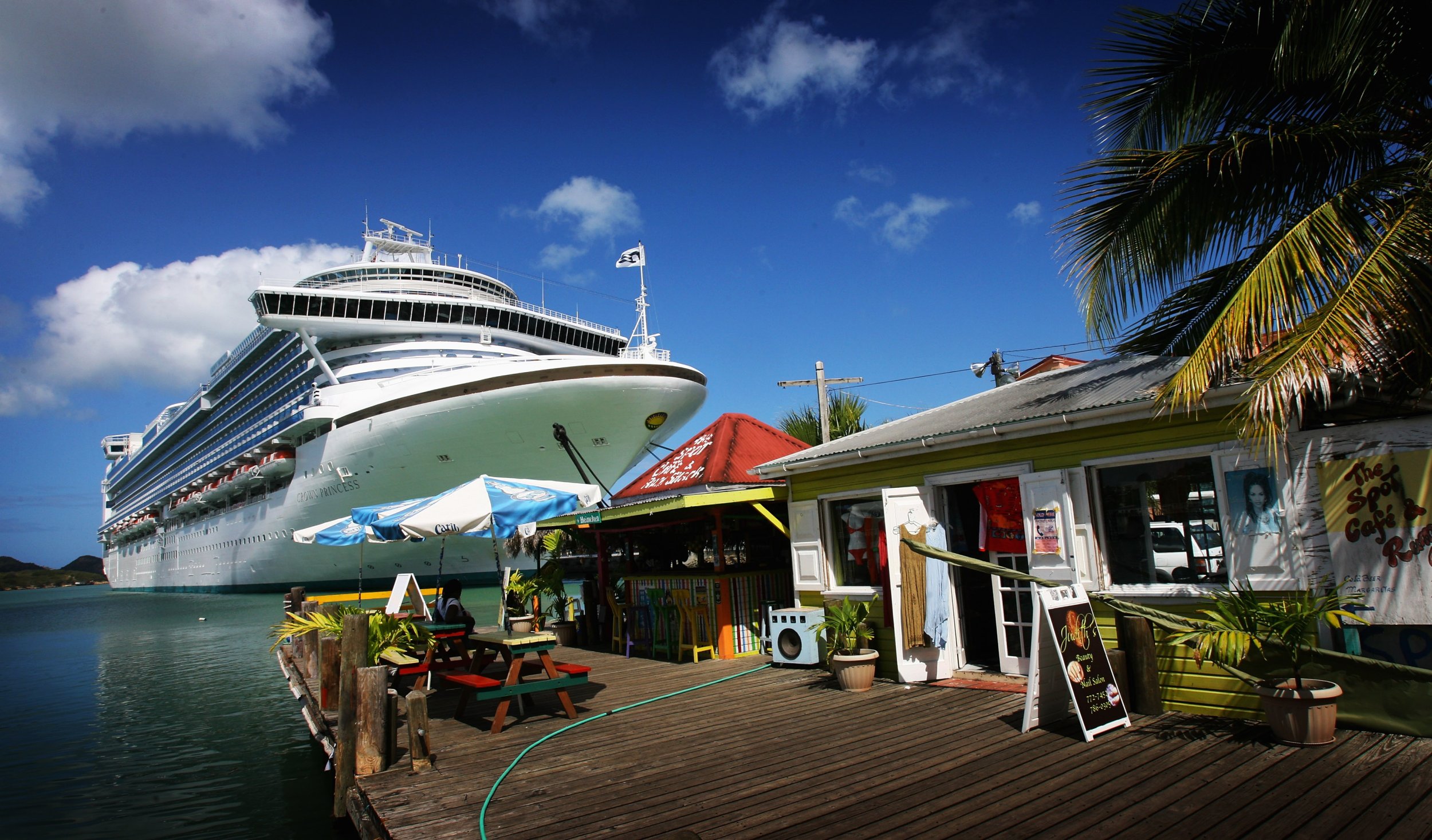Table Of Content
- We’re addicted to naked cruises and have already spent $40K — here’s why we’ll never do a clothed one again
- Outbreaks 2015 reports
- More from CBS News
- More cruise ships are under CDC investigation following COVID-19 outbreaks on board
- Nearly 30 Silverseas cruise passengers fall ill with diarrhea at sea
- Yes, Cruise Ships Have Strategies to Prevent Outbreaks

In cases where outbreaks are particularly severe, subsequent sailings could be canceled to allow for more thorough sanitization. MIAMI — The U.S. Centers for Disease Control and Prevention is investigating more cruise ships due to new cases of COVID-19 as the omicron variant drives extremely high infection levels in the industry hub of Florida. Carnival Cruise Line's Carnival Horizon cruise ship is shown docked at PortMiami in April. The Centers for Disease Control and Prevention is investigating more cruise ships due to new COVID-19 cases aboard.
We’re addicted to naked cruises and have already spent $40K — here’s why we’ll never do a clothed one again
The last time the industry's yearly gastrointestinal illness outbreak total was that high was back in 2016 — and it's only July. There are more than 21 million US cases reported annually, of which 1 mill related to kids. Outbreaks happen mostly during winter months and mainly in more crowded places with close quarters.
Outbreaks 2015 reports
The same berries were found on both ships, the CDC report concluded. In fact, further investigation revealed that the cruise line had purchased nearly 22,000 pounds of frozen raspberries from a single supplier in China beginning in June 2019. The findings led the World Health Organization to issue a recall for the frozen raspberries in November 2019. Throughout the summer, the cruise line investigated the source of the outbreak, extensively testing possible foods, but no culprit was identified, the report said. Most cruise lines require adult passengers to show proof of vaccination against COVID-19, according to AP.
C.D.C. Investigating Gastrointestinal Illness on Luxury Cruise Ship - The New York Times
C.D.C. Investigating Gastrointestinal Illness on Luxury Cruise Ship.
Posted: Thu, 08 Feb 2024 08:00:00 GMT [source]
More from CBS News
This is a neurodevelopmental disorder - babies are born with an underdeveloped head. After the frozen raspberries were removed from the ships, no further outbreaks were reported. Studies have shown that norovirus can continue to spread for two weeks or more after an infected person stops having symptoms of the illness, according to the CDC. Most people get better after a few days, but severe cases may require hospitalization. According to data compiled by the Centers for Disease Control and Prevention (CDC), there have been 13 outbreaks across six different cruise lines. This alarming number marks the highest incidence of such outbreaks since 2012 when there were 16 across eight lines over the entire year.
More cruise ships are under CDC investigation following COVID-19 outbreaks on board
Cruise ships are allowed to relax measures such as mask use if at least 95% of passengers and 95% of crew are fully vaccinated. Coronavirus hospitalizations in the state have also risen from about 1,200 patients two weeks ago to about 3,400 on Wednesday. But that is still less than one-fifth the number of hospitalizations reported in late August due to the delta wave.
Nearly 30 Silverseas cruise passengers fall ill with diarrhea at sea
Thirteen ships so far this year have reported outbreaks of the highly contagious stomach bug, the most since 2012, according to the U.S. Nearly 1,700 passengers have come down with the virus, which causes vomiting, nausea, diarrhea and stomach pain. Not only does it take the joy out of vacation, keeping passengers confined to their stateroom, but for older travelers, there’s a concern of dehydration, doctors say. It’s really not that surprising that norovirus outbreaks have already reached a high water mark this year.

Health officials at the CDC determined that norovirus caused the outbreak after Viking Cruises collected and sent specimens to the agency's laboratory for testing. The most recent norovirus outbreak was reported on the Viking Neptune cruise ship. During its June 6 to June 20 voyage, 110 of the ship’s 838 passengers, or 13.1 percent, were infected. If you feel ill from Norovirus while on a cruise ship, visit the ship's doctor. Additionally, be sure to drink plenty of water, as dehydration is a common side-effect.
What exactly is the CDC, and how is it involved?
This year, norovirus also has been reported on cruises operated by Royal Caribbean International, Celebrity Cruises, Princess Cruises, Holland America and P&O Cruises. The worst year for norovirus was 2006, when 32 ships reported infections, according to the CDC. To try to help prevent the spread of stomach viruses at sea, the CDC randomly inspects cruise ships and scores them on a scale of 0 to 100 through the Vessel Sanitation Program.

Nearly 30 Silversea cruise passengers get sick in gastrointestinal illness outbreak - USA TODAY
Nearly 30 Silversea cruise passengers get sick in gastrointestinal illness outbreak.
Posted: Mon, 15 Apr 2024 22:24:45 GMT [source]
When such symptoms are noticed, passengers should take precautions to prevent intensifying the disorientation. Obviously, the first thing is to go to the ship's infirmary (medical center) and contact the doctor. You should drink plenty of water as dehydration is a side-effect of the illness.
Cruise companies are encouraged to conduct frequent norovirus trainings for crew members, especially those with limited experience working with the cruise company (e.g., those who have served fewer than three contract terms). After a lull during the COVID-19 pandemic, cases of the highly contagious virus that causes diarrhea and vomiting, aka stomach flu, spiked this winter and spring on land. As post-pandemic travel surges and millions of Americans return to cruise ships, an increasing number of cruise lines are reporting outbreaks at sea. For the agency to report a cruise-ship outbreak, 3% or more of passengers or crew members must report symptoms of gastrointestinal illness, such as vomiting and diarrhea, to the ship's medical staff. The Centers for Disease Control and Prevention has reported 13 norovirus outbreaks on cruise ships so far in 2023.
If at any time during the cruise the number of ill passengers or crew exceeds 2 percent, the vessel must file a special report notifying CDC of the illness. The Vessel Sanitation Program (VSP) requires cruise ships to log and report the number of passengers and crew who say they have symptoms of gastrointestinal illness. Learn more about illnesses and outbreaks reported to VSP and find information about outbreaks of gastrointestinal illness on cruise ships.
These models helped visualize continued norovirus transmission and sources of potential exposure (e.g., contaminated surfaces in cabins of persons with AGE and high-touch surfaces in common areas). The CDC's "Vessel Sanitation Program" is for monitoring illness outbreaks on passenger ships carrying 100 or more guests on sailings from 3 to 21 days in length. This is done 24 hrs prior to arrival at any US port of call from a foreign port. This protocol only confirms that the CDC knows everything about it.
The twice-yearly exam is notoriously thorough and challenging, with scores of 85 or below considered failing. First and foremost, wash your hands often with hot water and soap; the CDC recommends hitting the sink before and after eating and smoking, after touching your face, after using the restroom, and whenever your hands are dirty. Limit person-to-person contact as much as possible (we're not saying you absolutely must refuse the captain a handshake at his cocktail party ... just use your judgment throughout the cruise). Cruise ships in particular have many of the conditions that make people susceptible to norovirus—close quarters, enclosed spaces, communal dining, and high turnover of passengers. The exact cause for the increase in the number of norovirus cases is not clear, but the increasing demand for cruises could be one explanation for the rise in reported cases, said Labus. The UK Health Security Agency recently reported that norovirus cases are approximately 66% higher this season than the five-season average of the same period before COVID-19.
Norovirus is typically spread by ingesting small particles of fecal matter, eating contaminated food, touching contaminated objects or surfaces and then touching the mouth or eyes, or having direct contact with an infected person. An infected person is the most contagious when symptoms are present and within the first few days of feeling better. According to the Minnesota Department of Health, symptoms of norovirus infection include vomiting, nausea, diarrhea, stomach pain, muscle aches, low-grade fever and headache. These symptoms usually appear between one to two days after contracting the virus but can appear as early as 12 hours after exposure. Cases typically last between 24 and 48 hours, though the illness may be more severe in young children and older adults, according to the Arizona Department of Health Services. Severe cases usually involve dehydration due to loss fluid—death is rarely ever a result.
It's important to wash your hands with soap and clean water frequently, but especially after using the bathroom or changing diapers, before eating and before touching your face. “Norovirus is one of the few viruses that doesn’t get deactivated by alcohol. You actually need to use soap and water to physically destroy it and remove it from your hands,” Ostrosky previously told TODAY.com. In the vast majority of people, norovirus symptoms will last several days and resolve on their own. However, as travel surges this summer, travel-related illnesses are expected to surge, as well. “I think our travel frenzy after COVID is partially fueling this continued spread (of norovirus),” says Ostrosky.

No comments:
Post a Comment